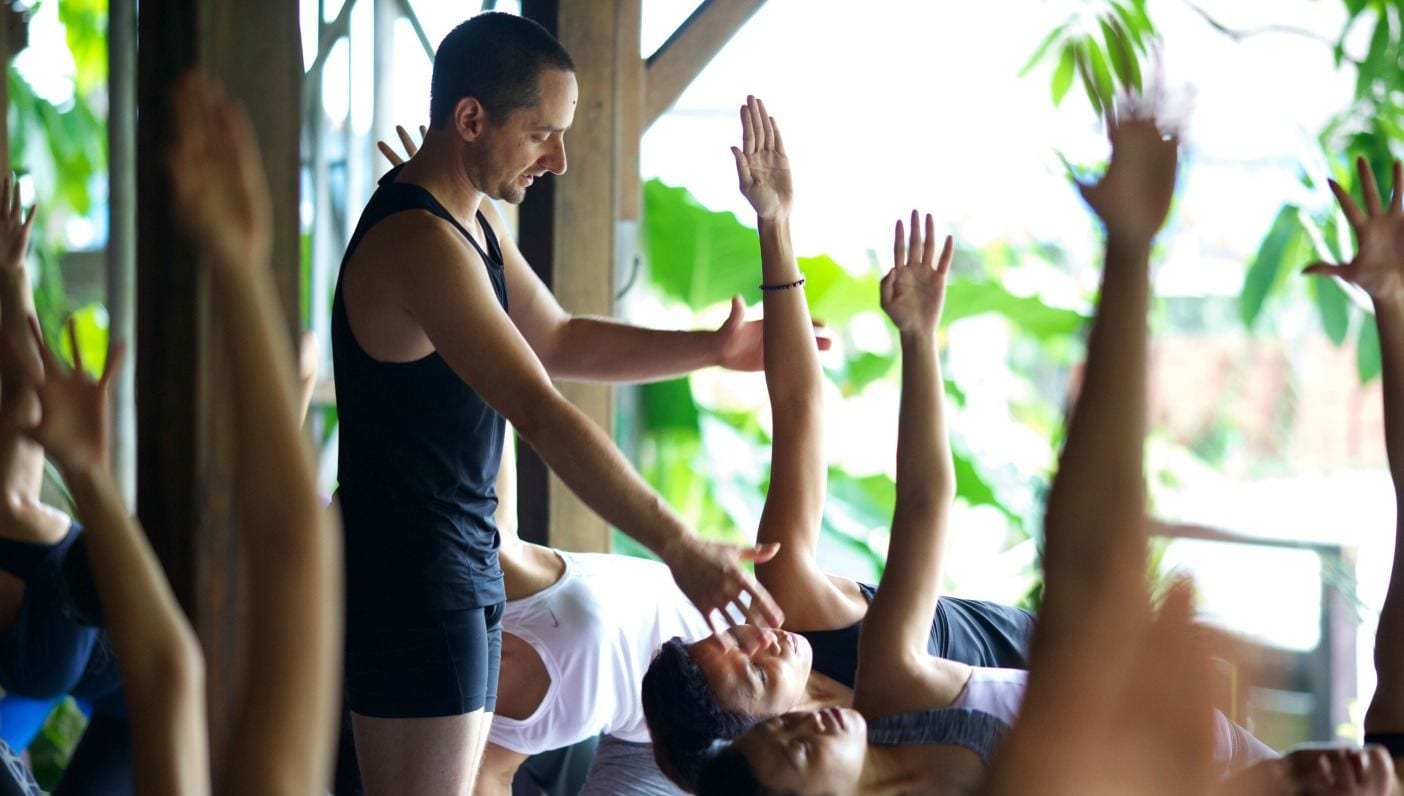
For many of us, our first foray into yoga is through asana practice. That was not the case for Noah Mazé, yoga teacher and founder of YOGAMAZÉ in Los Angeles. From birth, he was fully immersed in a bhakti yoga tradition of meditation, philosophy, and the followings of a guru. “Some of my earliest childhood memories are of pictures of Indian saints, sitting with my parents in meditation, and time spent in ashrams,” he says.
It wasn’t until he was 13, however, that Noah was introduced to yoga as asana practice. Up until that point he says he had considered spiritual practice to be separate from the usual things that energetic teenagers do. “But there we were doing backbends and handstands with my athletic self fully invited to the spiritual experience,” says Noah. Postural yoga, as he calls it, changed his perception to one where yoga became a way of engaging with all parts of life.
“Sort of the opposite to my experience, the modern yoga community often thinks of yoga only as the physical practice, but yoga means so many things. It’s complex. It’s vast. And it’s clichéd, but it really is a way of life,” says Noah. He points to the Bhagavad Gita where the word yoga is mentioned more than 150 times with different meanings. It is this breadth and vastness that Noah aims to translate to students and in YOGAMAZÉ teacher trainings.
The desire to educate and to encourage students to explore the meaning of yoga comes from Noah’s own appetite for learning. After discovering the physical practice of yoga he went on to study with teachers of varied traditions including Ashtanga, Iyengar, and more latterly Anusara yoga.
It was his experience watching both Anusara yoga and his family’s guru tradition fall apart that also encouraged him to be a yoga teacher who encouraged students to think and explore for themselves. “Seeing the light and dark side of yoga communities has been incredibly beneficial. You realize yoga is so much more than using certain phrases, or employing specific sequences. It’s more than bowing to one person and holding them up as the enlightened one upon which the whole school leans. I took that with me during those difficult times when two of the traditions I loved fell away,” he says.
The YOGAMAZÉ Way
So while YOGAMAZÉ does have methods for sequencing, adjusting, demonstrating, and observing, classes are more varied than at a typical yoga school. Noah doesn’t advocate one way of teaching. “Perhaps there will be a class with no lunges, or no cat-cows, or no salutations—or the sequences may be different to a standard vinyasa sequence depending on the class,” he says.
It’s a diversity of yoga—not for diversity’s sake, but rather to have the freedom and experience for teachers to tailor a class that engages students and brings them what they are looking for. As Noah has learned: “I love vinyasa flow, and the discipline and stamina and focus that it brings. But in alignment-based classes I learn more about each pose, and how the asanas link together, and how props can be of use. To pick just one style means robbing students of what they may need.”
As a result YOGAMAZÉ teacher training is very broad as well as deep. Trainees learn vinyasa and sequencing, as well as alignment-based yoga and philosophy. That means more trainee teachers get access to experienced teachers, and not just Noah. Heading up the anatomy curriculum is Dr. Paula Gelbart, a physical therapist. And Douglas Brooks, a scholar and professor of religion, leads the yoga philosophy curriculum.
“There is a lot to learn, and I want students to be informed, but also thoughtful and questioning what they have heard in order to make their own decisions,” says Noah. “What is important to me is that teachers don’t come away from training parroting sound bites or New-Age quotes, but that they become critical thinkers and use yoga to explore their assumptions and be prepared to have their minds changed.”
Such a style of deep questioning means teacher training classes are intimate—with student-teachers encouraged to share questions and their experiences so that everyone may learn from each other.
As such, trainee teachers are also encouraged to try different classes and styles of yoga during their training. “The more exploration the better,” says Noah, who adds that he’s also learning all the time. “Yoga is a process of being engaged, and that is what we want to teach. There are so many possibilities to explore, and we want to put those possibilities in the hands of our students. Above all yoga is about being openhearted, having courage, and welcoming the experience in.”
—

Helen Avery is a journalist, writer, yoga teacher, minister-in-training, and full-time dog walker of Millie.